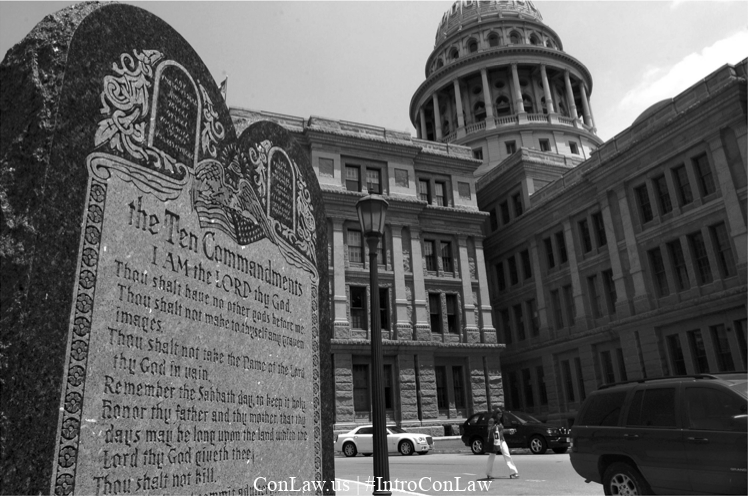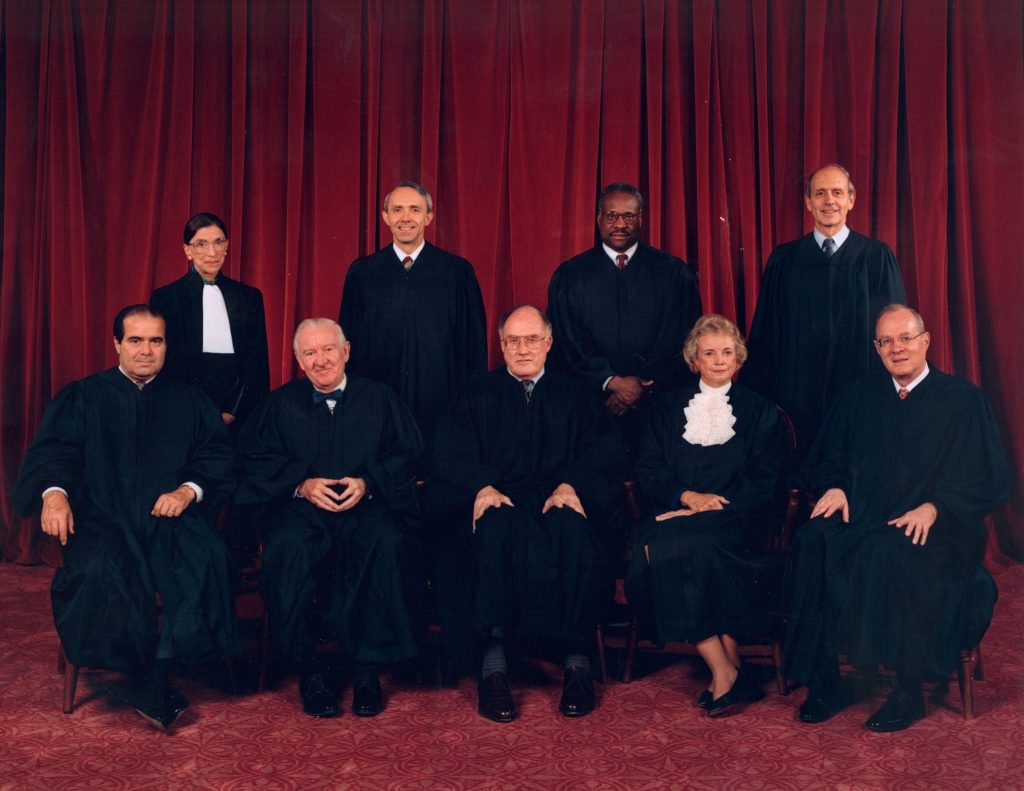
The Ten Commandments Monument at the Texas State Capitol

The Rehnquist Court (1994-2005). Seated, from left to right: Antonin Scalia and John Paul Stevens, Chief Justice William H. Rehnquist, and Justices Sandra Day O'Connor and Anthony M. Kennedy. Standing, from left to right: Ruth Bader Ginsburg, David H. Souter, Clarence Thomas, and Stephen G. Breyer.

The Ten Commandments Monument at the Texas State Capitol

Heroes of the Alamo Monument at the Texas State Capitol

Then-Attorney General, and future-Governor Greg Abbott defended the monument.

From Left to Right: Amy Warr, Ed Burbach, Greg Abbott, Don Willett, Barry McBee, Ted Cruz, David Morales.

Law Professor Erwin Chemerinsky argued that the monument was unconstitutional.

Justice Souter acknowledged that there is a relief of Moses and the Ten Commandments in the Supreme Court chamber. However, he found this local display quite different.

Justice Souter: “Moses and the Commandments are displayed in this very Courtroom up on the south frieze, but Moses stands there in the company of other lawgivers, both great and secular, demonstrating that the display is about lawgivers not about religion and was not the product of some religious objective.”
On the grounds of the Texas State Capitol was a six-foot-high stone monument inscribed with the Ten Commandments and other religious symbols. The Fraternal Order of Eagles donated it to the state in 1961. By a 5-4 vote, the Court held that the Texas “display of this monument with both the legacy and secular significance does not violate the Establishment Clause.” Although Justice Breyer found Van Orden to be a “borderline case,” he concluded that the Texas display communicates both a religious and a secular message, and was therefore constitutional.